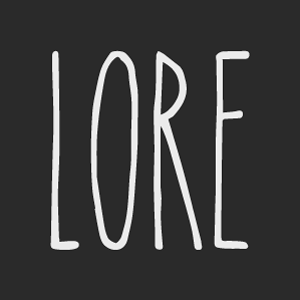Abrahams, Roger D. Jump-Rope Rhymes: A Dictionary (American Folklore Society, 1969).
Allen, H. Merian. “The Genesis of Some Nursery Lore.” The Sewanee Review 25(3), June 1917: pp. 361-366.
Baker, Megan. “Hastings man’s new book investigates origins of nursery rhymes, including that ‘Little Bo-Peep’ came from St Leonards-on-Sea.” Sussex World. November 22, 2022. https://www.sussexexpress.co.uk/news/people/hastings-mans-new-book-investigates-origins-of-nursery-rhymes-including-that-little-bo-peep-came-from-st-leonards-on-sea-3927201
Beck, Julie. “Why Did We All Have the Same Childhood?” The Atlantic. 11/8/2022. https://www.theatlantic.com/family/archive/2022/11/kids-pass-down-games-rhymes-legends-childlore/672024/.
Bronner, Simon J. American Children’s Folklore (August House, Inc., 1988).
Bronner, Simon J. Explaining Traditions: Folk Behavior in Modern Culture (The University Press of Kentucky, 2011).
Crosby, Alfred W. America’s Forgotten Pandemic: The Influenza of 1918 (Cambridge University Press, 2003).
Davis, David C. “Phantoms in Children’s Literature.” Elementary English 39(5), May 1962: pp. 403-407, 417.
Dolby, Karen. Oranges and Lemons: Rhymes from Past Times (Michael O’Mara Books, 2012).
“Everybody has heard of what happened…” The Downs Chief. January 16, 1890. https://www.newspapers.com/image/423958638/
Foster, Thomas. “Nature Myths in Nursery Rhymes.” The Gentleman’s Magazine, vol. CCXLIV, January to June 1879: pp. 36-53.
Georges, Robert A., and Alan Dundes. “Toward a Structural Definition of the Riddle.” The Journal of American Folklore 76(300), April-June 1963: pp. 111-118.
Gonzalez, Eileen. “Plagues and Priest Holes: 6 Nursery Rhymes and Where They Came From.” Book Riot. January 21, 2020. https://bookriot.com/origins-of-nursery-rhymes/
Halliwell, James Orchard. Popular Rhymes and Nursery Tales (John Russell Smith, 1849).
“Heaviest deadlift with one finger.” Guinness World Records. [n.d.] https://www.guinnessworldrecords.com/world-records/heaviest-deadlift-with-one-finger
Heywood, Colin. A History of Childhood: Children and Childhood in the West from Medieval to Modern Times (Polity Press, 2009).
Hu, Jane C. “A Brief History of Cooties.” Smithsonian Magazine. May 2019. https://www.smithsonianmag.com/history/brief-history-cooties-180971914/
Kadiyan, Archana R. and Itika Dahiya Dagar. “The Role of Imagination and Fantasy in Children’s Literature.” Language in India, Vol. 23, No. 10, October 2023, pp. 121-142. http://www.languageinindia.com/oct2023/drarchanaimaginationfantasychildrensliterature.pdf.
Leasor, James. The Plague and the Fire (McGraw-Hill, 1961).
Luu, Chi. “The Linguistics of Cooties (and Other Weird Things Kids Say).” JSTOR Daily. May 6, 2020. https://daily.jstor.org/the-linguistics-of-cooties-and-other-weird-things-kids-say/
Mansfield, Alina. “Slumber Parties as Rites of Passage.” Children’s Folklore Review 39(1), 2018: pp. 3-21.
Martinez, Mellissa. “Age old playmates: Miss Lucy, Suzie and Mary Mack.” Claremont Courier. August 31, 2018. https://claremont-courier.com/opinion/t29158-lex-31342/
Merrifield, Ralph. The Archaeology of Ritual and Magic (B.T. Batsford, 1987).
Mintz, Thomas. “The Psychology of a Nursery Rhyme (‘One, Two, Buckle my shoe…’).” American Imago 23(1), Spring 1966: pp. 22-47.
“Mother Goose.” Poetry Foundation. [n.d.] https://www.poetryfoundation.org/poets/mother-goose
“Music and Drama.” The Winnipeg Daily Tribune. July 27, 1901. https://www.newspapers.com/image/36404026/
Nulton, Lucy. “Jump Rope Rhymes as Folk Literature.” The Journal of American Folklore 61(239), January-March 1948: pp. 53-67.
“A nursery rhyme hides the wretched secrets of New England Bank.” Sussex World. September 19, 2017. https://www.sussexexpress.co.uk/news/a-nursery-rhyme-hides-the-wretched-secrets-of-new-england-bank-1081334
Opie, Iona, and Peter Opie. The Lore and Language of Schoolchildren (Oxford University Press, 1960).
Opie, Iona, and Peter Opie. Children’s Games in Street and Playground (Oxford University Press, 1969).
Opie, Iona, and Peter Opie. The Oxford Dictionary of Nursery Rhymes (Oxford University Press, 1973).
Opie, Iona, and Peter Opie. The Singing Game (Oxford University Press, 1985).
“Polio.” Mayo Clinic. [n.d.] https://www.mayoclinic.org/diseases-conditions/history-disease-outbreaks-vaccine-timeline/polio
“Rockefeller Started It.” Tacoma Daily Ledger. October 7, 1918. https://www.newspapers.com/image/725282741/
Ronca, Debra. “Has ‘Light as a Feather, Stiff as a Board’ Ever Worked?” HowStuffWorks. [n.d.] https://science.howstuffworks.com/science-vs-myth/everyday-myths/has-light-as-feather-stiff-as-board-ever-worked.htm
“The Salt Cellar / The Pepperpot.” The Public Paperfolding History Project. March 24, 2025. http://www.origamiheaven.com/historyofthesaltcellar.htm
Schneider, Caitlin. “A Brief History of Cootie Catchers.” Mental Floss. August 16, 2015. https://www.mentalfloss.com/article/67389/brief-history-cootie-catchers
Shackle, Eric. “Was Little Miss Muffet a local girl?” North Mymms History Project. 2001. https://www.northmymmshistory.uk/2018/02/was-little-miss-muffet-local-girl.html
Sprochi, Amanda. “In-Flew-Enza: Spanish Flu in Columbia: The Outbreak: 1918-1919.” University of Missouri Special Collections and Archives. 2018. https://library.missouri.edu/specialcollections/exhibits/show/in-flew-enza/outbreak
Taylor, Stephen J. “Got Cooties? Try P.D.Q.” Hoosier State Chronicles: Indiana’s Digital Newspaper Program. August 3, 2015. https://blog.newspapers.library.in.gov/got-cooties-try-p-d-q/
Temple, Emily. “The Secret History of ‘Light as a Feather, Stiff as a Board.’” Lit Hub. October 6, 2020. https://lithub.com/the-secret-history-of-light-as-a-feather-stiff-as-a-board/
“There Was an Old Woman Who Lived in a Shoe.” AmericanLiterature.com. [n.d.] https://americanliterature.com/author/mother-goose/nursery-rhyme/there-was-an-old-woman-who-lived-in-a-shoe
“There was an Old Woman Who Lived in a Shoe.” Nursery Rhymes from Mother Goose. [n.d.] https://nurseryrhymesmg.com/rhymes/there_was_an_old_woman_who_lived_in_a_shoe.htm
Truong, Peggy. “The Origin Story of ‘Light as a Feather, Stiff as a Board’ Isn’t Actually That Scary.” Cosmopolitan. October 11, 2018. https://www.cosmopolitan.com/entertainment/tv/a23724447/light-as-a-feather-game-origin/
Tucker, Elizabeth. “Levitation and Trance Sessions at Preadolescent Girls’ Slumber Parties.” In Brian Sutton-Smith & Diana Kelly-Byrne (eds.), The Masks of Play (Leisure Press, 1984); pp. 125-133.
Tucker, Elizabeth. “‘I Hate You, You Hate Me’: Children’s Responses to Barney the Dinosaur.” Children’s Folklore Review 22, 1999: pp. 25-33.
Tucker, Elizabeth. “Levitation Revisited.” Children’s Folklore Review 30, January 1, 2008: pp. 47-60.
Turner, Ian. Cinderella Dressed in Yella (Taplinger Publishing Company, 1972).
Warner, Marina. “Mother Goose Tales: Female Fiction, Female Fact?” Folklore 101(1), 1990: pp. 3-25.
Wheeler, William A. An Explanatory and Pronouncing Dictionary of the Noted Names of Fiction, Twenty-Fifth Edition (Houghton, Mifflin, and Company, 1898).
Winick, Stephen. “Humpty Dumpty: Metafolklore, Riddles, and Yolks.” Library of Congress Blogs: Folklife Today. March 30, 2024. https://blogs.loc.gov/folklife/2024/03/humpty-dumpty-metafolklore-riddles-and-yolks/
Woolley, Jacqueline D. “Thinking About Fantasy: Are Children Fundamentally Different Thinkers and Believers From Adults?” Child Development, Vol. 68, No. 6, 1997, pp. 991-1011. JSTOR. https://doi.org/10.2307/1132282.
Yannucci, Lisa. “Charlie Chaplin Went to France.” Mama Lisa’s World. [n.d.] https://www.mamalisa.com/?t=es&p=3491
